Art on the Block and NOIS envision economic power for the people in Southwest Detroit
Amelia Duran was born into a family with a strong heritage of activism in Southwest Detroit, a predominantly Latin American neighborhood. Her mother’s family has roots in the area that date back to the 1890s. Her father is a first-generation Chilean immigrant who came to Detroit in the 1970s after meeting her mother in France when he had fled to Europe to escape political turmoil and social unrest in Chile.
Her father, Ismael, was a musician, and he would travel to perform music about Latin American struggles, which led him to arts-based activism. After moving to Southwest Detroit, he built a now-defunct arts center at 4th and Junction called La Casona, and later became the Executive Director for the Center of Music and Performing Arts Southwest (COMPÁS). Then, about five years ago, he decided to strike out on his own and co-founded Garage Cultural with Lydia Gutierrez from Hacienda Mexican Foods.
At that time Duran had already been working in arts activism and community engagement: during the U.S. Social Forum in Detroit in 2010, she helped organize the creation of a large-scale mural on Vernor Hwy. with Chilean muralist Dasic Fernandez and a group of young people from a politically-rooted arts center in the South Bronx called the Rebel Diaz Arts Collective, which was created by two young hip-hop artists who were also children of Chilean exiles. She also worked with a grassroots Detroit hip-hop collective called The Raiz Up and applied for a Knight Arts Challenge grant on behalf of the organization so they could do more large-scale mural work connecting art with music in the Southwest Detroit community.
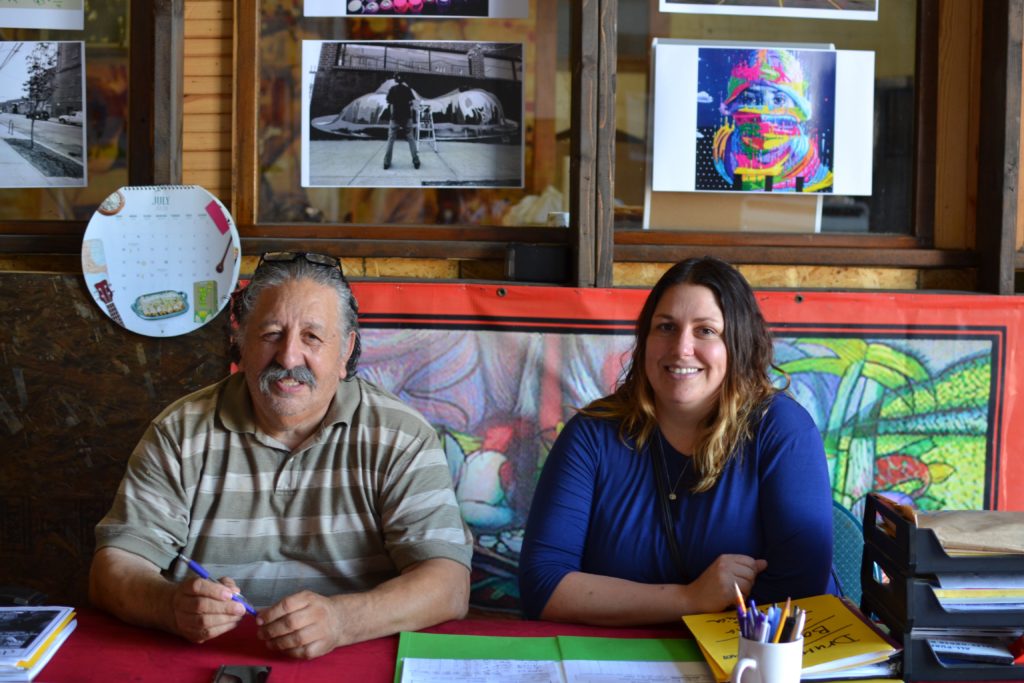
While the collective disbanded in 2014, the mural work continued under Duran’s direction. And when her father went to Chile for a year and a half, she took on a greater role with Garage Cultural, ultimately deciding that the cultural center needed to solidify its identity, initiatives, and role in the community.
The building in which Garage Cultural is located is a warehouse owned by Lydia Gutierrez of Hacienda Mexican Foods, the organization’s first and primary business sponsor. She partnered with Ismael, allowing him to use the space and turn it into a cultural center rooted in Latin American arts and culture, but because of the constraints of the building – too hot in the summer and too cold in the winter to be active year-round, for starters – the center was more project-based, focused on short summer programs with art and music classes.
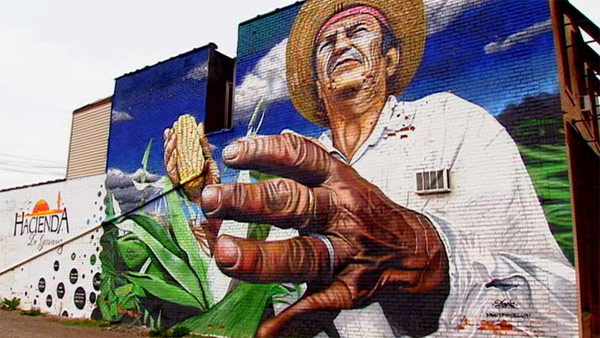
“We really needed to figure out what our core program components were so that we could think of ways to strategically push ourselves forward,” says Duran. “We’re in this building on Livernois that’s covered in murals – that work needed its own identity and its own initiative, that’s the idea behind Art on the Block.”
Art on the Block (Arte en la Cuadra) is a winning project of the 2017 Knight Arts Challenge in Detroit. The concept is “to highlight Southwest Detroit’s historical connection to public art with a 10-day mural blitz and arts festival that is reflective of the neighborhood’s cultural identity and heritage.”
“We want to create more visual impact in a smaller period of time,” Duran explains. “We’ve been doing one or two murals a year over the last five years, but that’s really spread apart. We really wanted to do something more connected to the community and draw people together in a more strategic way, to give it an identity and a structure to follow.”
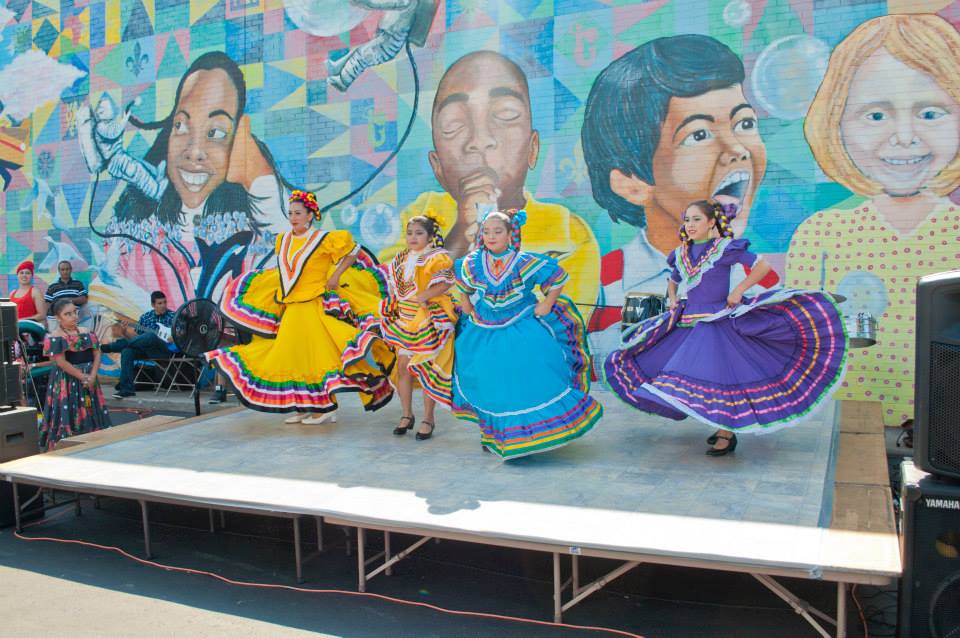
This 10-day mural festival will be held August 2018 and will culminate in a one-day event with food, dancing, music, and visual arts – all important components of the arts in Southwest Detroit.
“There will be different activities for people to engage in while they’re here,” says Duran. “We will be working with a mix of local and international artists. There has been a concentration of mural arts in our community but we also want to bring in other artists so the walls don’t start to all look the same, but we want artists that will be able to create things that are representative of the arts and culture in Southwest Detroit.”
She explains that doesn’t mean exclusively Latin culture – she herself is a mix of Chilean and Irish/Czech, and although she identifies mostly as a Latina she acknowledges both histories of migration. In a community that is heavily Mexican and Puerto Rican, even people who are not Latin themselves tend to assimilate to Latin culture because it is so prominent and diverse in Southwest Detroit.
“We want the walls to be representative of the culture here that is its own individual, unique thing,” she says. “Sometimes I tell people my ethnicity is ‘Southwest Detroit.’ Because that’s my main cultural identifier; it comes even before being Latina. It’s a pretty important thing to people who grew up here. And as the city identity shifts with an increase of outside investment, we want to assert our desire to carry over our identity to future generations so our it doesn’t get lost in development. It’s an issue of identity and culture: we don’t want to be culturally displaced.”
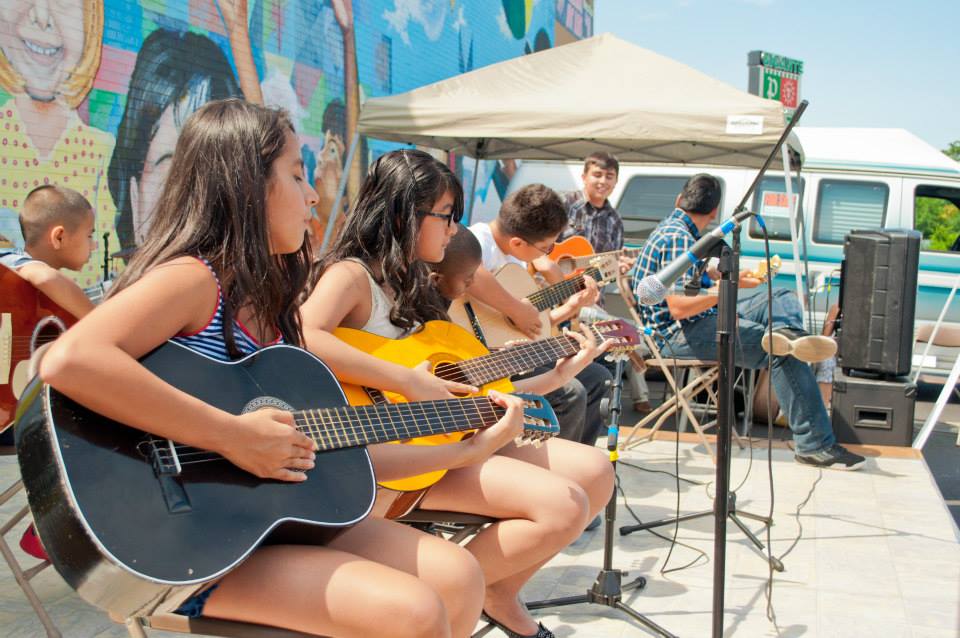
Just 10 years ago, Detroit was a drastically different place. Before it topped every travel publication’s list of top destinations to discover and before every major national publication began calling it a city on the rise, before billionaire developers began buying up properties in bulk and before housing demand outpaced availability, and well before median home prices nearly doubled over a three-year period, Detroit was a city left for dead, its citizens left to fend for themselves. With necessity being the mother of invention, creative (and resilient) Detroiters made it work. But with a surge of outside investment as sudden and powerful as a tsunami came a fundamental paradigm shift in a city previously left to the scrappers and the scrappy.
“As the city develops and is increasing its ‘policing’ and trying to increase its revenue base, they’re now charging community members to use the parks or to close down streets for locally driven events. All these things have become barriers to smaller organizations trying to do grassroots events,” Duran explains. “The Unity in the Community festival in Clark Park no longer happens. The Cinco de Mayo parade still exists but on a much smaller scale than it did when I was growing up. The Puerto Rican festival couldn’t afford to sell food anymore because of the licensing the city required, making it financially impossible to continue in the last few years. We’re really feeling this sense of loss for all these festivals that were a source of great pride and cohesion in the community, so we hope to recreate that with this event on a large scale and try to touch on some of the themes and elements we have lost.”
A project like Art on the Block hopes to provide a renewed sense of pride and ownership in the community, she says, it’s important that the murals have a deep connection to the community itself.
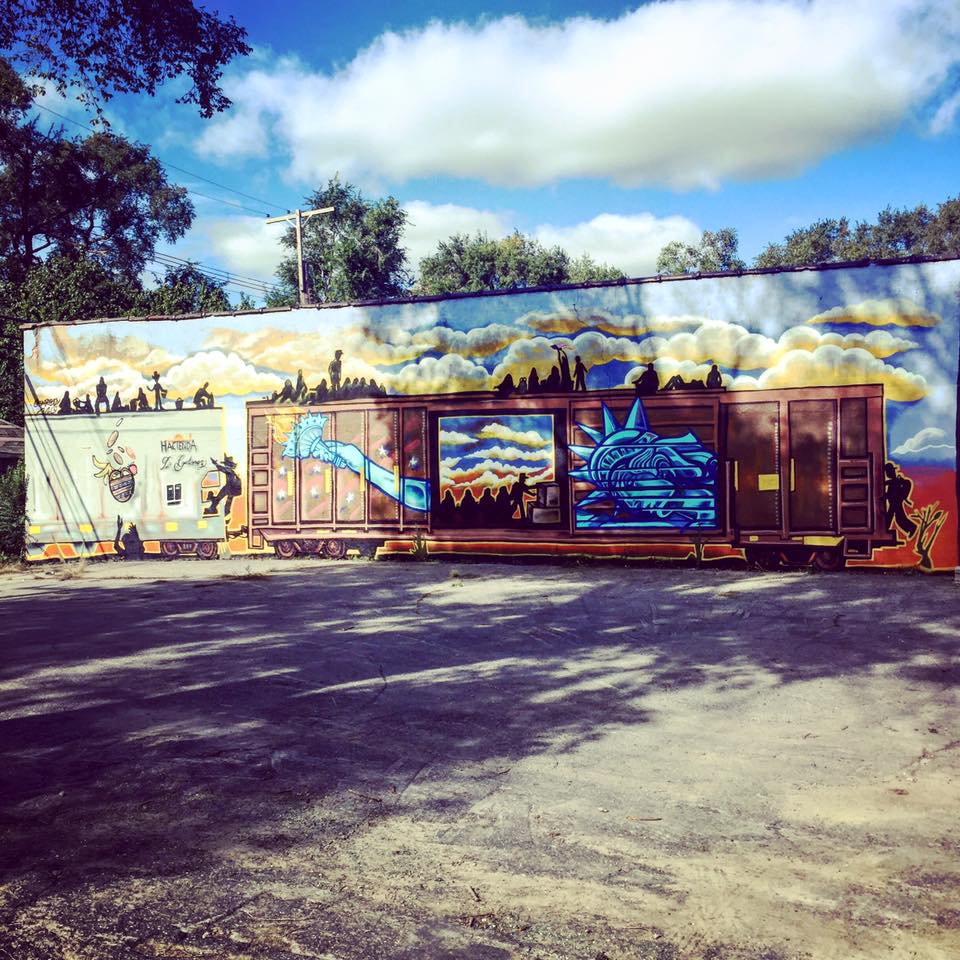
“The walls can’t just happen without residents having a connection with them because then there is no sense of ownership, no increased sense of local pride in our historical community. We’re conscious that as we create more murals, we open ourselves up to having more people say, ‘Oh, Southwest is so cool, let’s move there.’ It’s a fine line we are walking, so we have to do the work it in a way that’s intentionally uplifting the local community, so it doesn’t become a part of our own demise.”
What Duran is getting at is probably one of the more troubling concepts in the contemporary western world: gentrification. Which is, to wit, when a neighborhood or city once populated predominantly by low-income persons, often predominantly of color, suddenly becomes desirable to moneyed investors typically as the result of grassroots creative work done by the established residents, who then start buying properties and remodeling them for a decidedly different audience, in turn driving up rent and property values, in turn driving out the very people who once lived there and made it desirable in the first place through their sweat equity which, alas, cannot compete with large sums of cash and privileged outsiders moving into the area now perceived as “cool.” This is happening all over Detroit right now, and is affecting neighborhoods in cities all across America.
For Duran, Art on the Block is not just about throwing a feel-good arts festival. It’s about creating sustainable economic opportunities for the people who already live in Southwest Detroit, and not just passively turning the neighborhood over to the outsiders who have started creeping in. The festival will bring in people, who will hopefully spend money in the community and support local entrepreneurs, so that the event can be self-sustainable beyond the two-year grant period with the Knight Foundation and continue being an annual economic driver for the neighborhood.
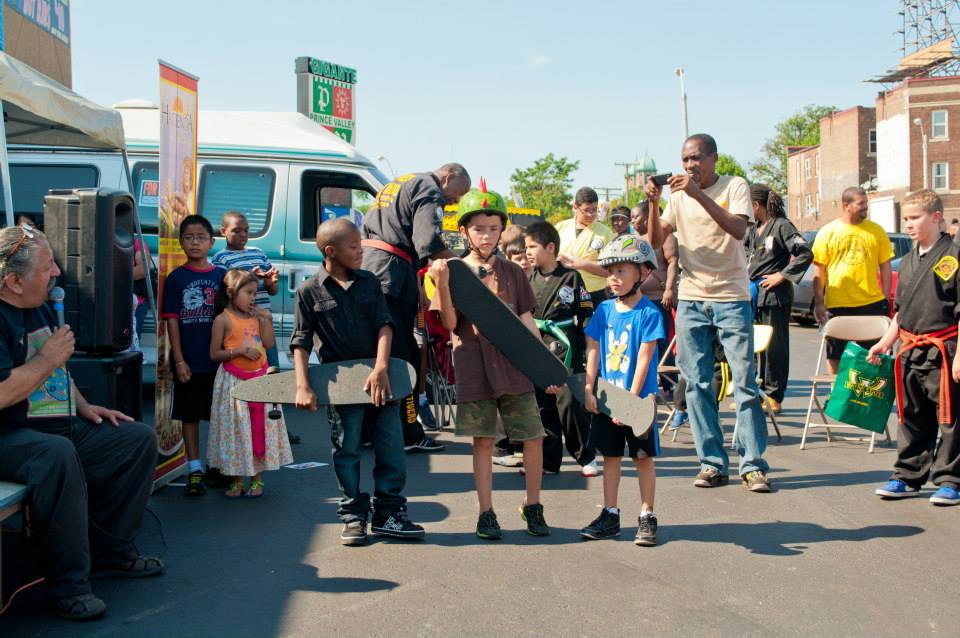
“We have yet to see a community [anywhere in the world] that has been completely successful in curbing gentrification trends,” she states. “Now we have to prepare ourselves to fight against what sometimes feels inevitable. We have to create new economic strategies so that [these outsiders] are spending money on our things, things that support our local economic fabric and viability to guarantee our continued presence here. We can’t just put our blinders on anymore and pretend it’s not happening. We weren’t strategic enough five, ten years ago and now we’re starting to get priced out of the places where we laid the groundwork. We’re fighting a ticking time bomb because people can’t afford the homes they want to be in, so we’re being forced to start thinking about things as capitalists even though we’re not capitalists, we’re community activists who are interested in collective economic strength.”
Which is why Duran is also developing NOIS – like as to make “noise,” and a name that stands for “Neighborhood Office and Incubator Space” but is also a play off of the street name “Livernois,” where Garage Cultural is located. NOIS’s mission is to “create community equity, by making noise together” and is a 2017 ArtPlace America grantee, the only grantee from Detroit that year. NOIS will be housed in the same warehouse space as Garage Cultural and will serve as a cooperative workspace, informal gathering space or ‘community living room’ and coffee shop – what the beloved locally-owned coffee house Café Con Leche once was to Southwest Detroiters, before it became one of Southwest’s first victims of rising rents.
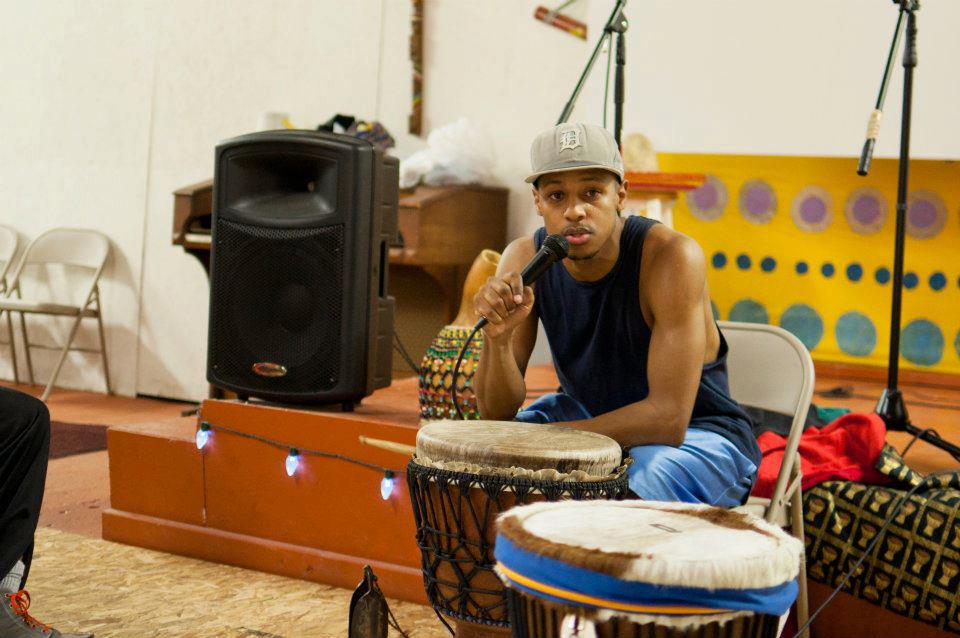
“NOIS is so important because that’s our economic strategy. How do we create ways to support the informal economy and uplift the community that has supported us for so long? We create a space that is rooted in entrepreneurship where people have access to shared resources, and have those people in the same informal space talking to each other, everyday. We wanted to recreate the synergy that existed in Café Con Leche in a way that’s more sustainable, so it’s not just a coffee shop but a place with memberships, programming, and vital resources to begin advocating for ourselves collectively with city government.”
NOIS will eventually occupy a 3,200-square-foot storefront next to Garage Cultural, and Duran hopes that operating this small revenue-generating space will eventually trickle over into the rest of the building and allow them to renovate it to its full capacity.
“We have to increase our revenue streams with social enterprise in order to sustain ourselves for the future,” says Duran. “If we don’t start thinking pragmatically about that now and planning for it, someone with more resources will come in and do it, taking it away from the organic populations. If you do this work long enough with no money eventually people with money will take notice and want to do it themselves, reaping from the soil we made rich. Art on the Block and NOIS are part of a bigger picture of development that’s equitable for everybody.
‘We’re rooted in this geographic space. We’re emotionally tied to it. We have to do this work; if we want to stay here for generations to come, we don’t have any other option.”

(1) How do you like to collaborate?
I think collaboration has really been at the forefront of the work we’ve been doing over last couple of years. When we think about what the next generation of leadership looks like in Southwest Detroit, a lot of our hopes are rooted in a deep desire to be more supportive of each other to ensure that its being nurtured from within and not transplanted from somewhere else. Because of that, we strive to be more intentionally collaborative, something we didn’t always see from our elders in the past. We value the path they laid but we’re also conscious of how we want to build on it. For now, our collaborations are somewhat informal, we’re not always decision makers in each other’s projects. But we’re making sure that the possibility for overlap in service exists so that we are working towards developing a strong base with a sense of collective values for the future of arts and cultural work in our community.
(2) How do you a start a project?
I feel like a lot of things I see happening are so organic it’s hard to identify how or when they started because they’re an evolution of things that have occurred over a gradual period of time. One thing leads to the next and so on and so forth. When we were developing Art on the Block we were conscious of the fact that there is a long history of mural work being done by a lot of different people in the community dating back to the late 80’s [and beyond], it’s all relevant because it created a community desire and a historical value for mural arts. Those installations sought to provide things that made our [sometimes bleak] surroundings more aesthetically appealing, they told our stories and gave us something to be proud of. So, in some ways, Art on the Block is the culmination of organic work that had been happening here for a very long time, and because of that we hope it evolves into something that everyone can participate in and feel a sense of ‘belonging’ to.
(3) How do you talk about your value?
Although Art on the Block is an arts project, the value is twofold: it’s aesthetic but it’s also relationship-people based.
It’s aesthetic in that we’re transforming spaces and creating something the community can feel some sense of pride in, to balance how we can feel when we are surrounded with so much blight and dilapidation. Rather than seeing an empty wall on an abandoned building they see a beautiful mural. This project was originally about changing people’s perceptions of their environment and creating a renewed sense of pride, to inspire people to take better care of that block or space.
It’s also intentionally seeking to deepen relationships between ourselves, the residents we service and the people who come to participate in any given event, everything is family and community oriented. Sometimes the base of a mural might be done as a paint-by-numbers, so that we’re physically engaging the community in the creation of a project and they can look at it later and say, “I was involved with that; I helped make that happen.” It’s about engaging with the community and helping them see themselves as a critical part of the creation of what we want to see in our surroundings.
There is also potential for it to have an economic value, it’s a one-day festival and we want people to come, participate, and see it as an annual asset. Our focus is always going to be to support people within the community, but we also want individuals from the outside communities to come and support it so that its economically appealing to our vendors to participate every year. That’s how we can create value for the local artists selling crafts, restaurants selling food, etc. – there is the potential to create an economic benefit and impact.
(4) How do you define success?
If the event had the ability to really connect the community and make sure they’re engaging with it, then it was a success.
Our intent is to engage people and for them to be continuously engaged, for them to see themselves as an integral part of the process so later, in future events, they’re engaged and trying to make it relevant to their own lives.
With these projects, we want to make sure they’re somehow rooted in the community, so community members can see how they’re critically rooted in these projects. We’re finding ways to intersect community members’ passions with a need. Southwest Detroit is still an immigrant community where residents are often still in their own siloes out of fear, so presence is very important – for us to come together and represent our community, to stand up for what we want. I can only say so much on my own. Our intent with these projects is to engage more people so there are more people in the room when decisions are made and not just the same 10 people screaming at the people in power. That ultimately leads to a stronger community fabric.
(5) How do you fund your work?
For the last five years it’s been pretty organically funded. We built our organization through the support of Hacienda Mexican Foods as our corporate sponsor, they are the only reason we have been able to ‘physically’ exist within the space on Livernois. Things were funded by passionate people and a small $5,000 grants here or there. It’s never truly been enough to support a full-time staff working to produce year-round programming. Knight and the Community Foundation of SE Michigan have been our two main grantors over the last two years, and with the work we’re trying to do now we’re really focused on seeking out large-scale funding to get us to the next level. We’ve been fortunate to have foundations [like Knight and Artplace] who are willing to support developing arts and culture organizations who don’t have the strongest or largest annual operating budgets.
There’s also been a desire to achieve a certain level of resident investment. Last year we did a small crowd funding campaign to raise $1,500 for a plane ticket and some paint to bring Mexican artist Jesus Benitez back to repair a mural he had done in 2014. Those initiatives are not always necessarily about the money but rather about having a sense of buy-in from the community and to gauge the importance of this work to them individually. $20 might not seem like a lot but for our constituents it is, and that shows that they care enough about the work that is being done to want to financially contribute to the project.
In a perfect world, all our summer programs would be free, because our populations need that kind of access. But for other projects it can be equally important for us to be thinking about how to increase our family’s financial potential so that they we can be mutually invested in its long-term sustainability, that’s at the core of NOIS. With Art on the Block funding strategy is two-fold: we’ll have grants and be matching them with dollars from the local business owners whose walls will be painted. But, we’re also trying to ensure that it’s economically sustainable: so, a percentage of everything that is produced from the large-scale events will have to go back into the organization to make sure it can continue to happen again next year. For now, the Knight grant is a two-year commitment, then we’re on our own. We can’t always guarantee that we will be able to get more grants like that, so we need to think now about how we’re going to fund it in year three.
